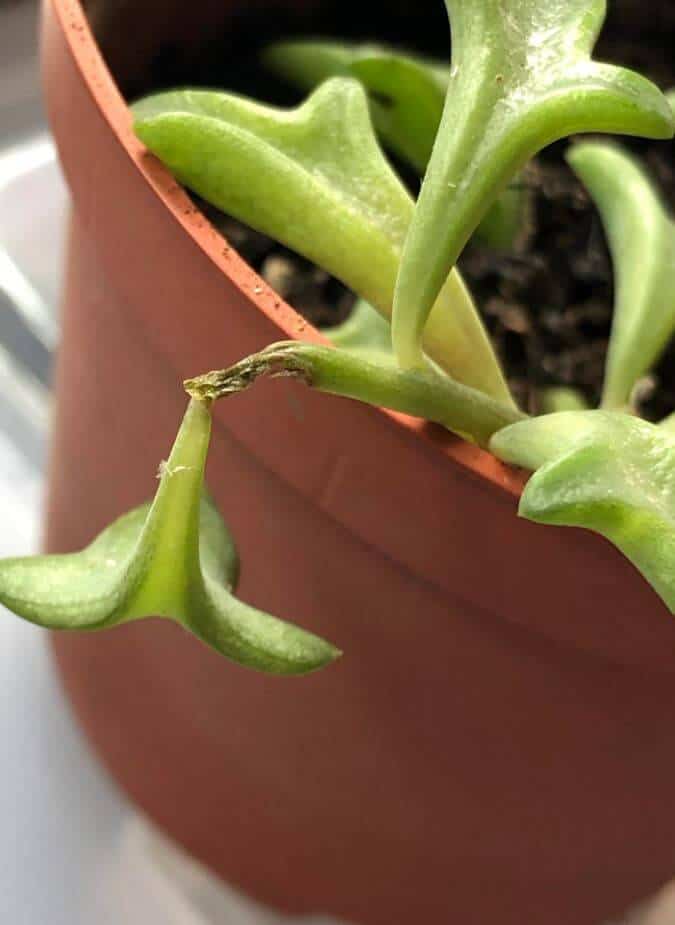Last Updated on February 9, 2023 by a Friendly Gardener
If you own a lovely String of Dolphins succulent, you may be alarmed if your plant begins to lose its leaf shape, shrivel, or give the appearance of death. Luckily, in some cases, it’s enough to correct your watering schedule or reduce heat exposure. Root problems and the onset of root rot can be a contributing factor, however, in many, cases you can save your plant.
The Senecio peregrinus is a somewhat exotic succulent that is quite easy to care for. It does require a bit more water than other succulents but is less at risk for dehydration than the closely related “String of Pearls”.
Why Are My Plant’s Leaves Shriveling?
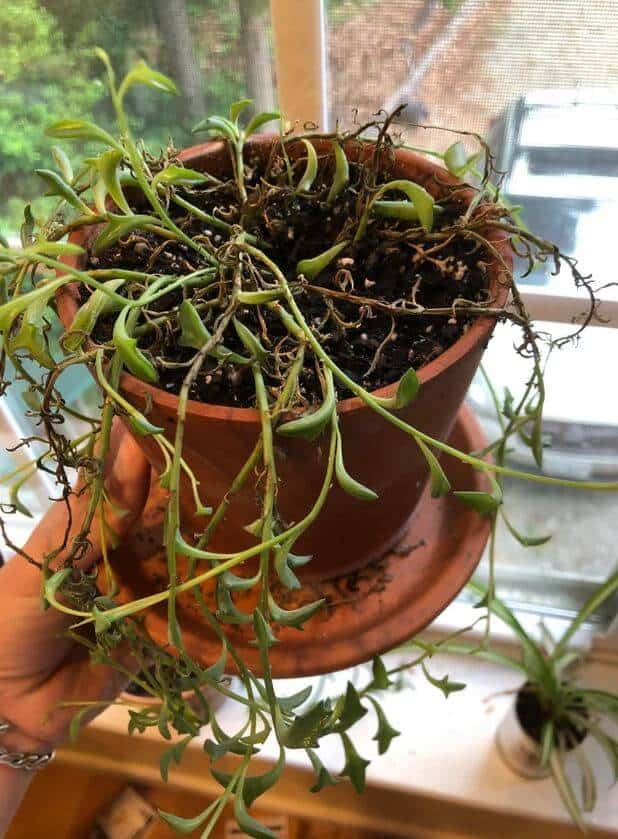
Shriveling is generally a symptom of dehydration, still, don’t rush to overwater your plant. Shriveling foliage can be indicative of improper lighting, excessive heat, root rot, and overwatering, so it’s vital that you identify the real cause to be able to fix it.
Excessive Heat
One of the more common causes of shriveling foliage on this plant is heat stress and it is generally caused when the plant is placed in direct sunlight without proper acclimatization. If you recently acquired your String of Dolphins, it may not be acclimated to a spot directly situated in the sun. These plants have smallish root systems, so even with generous watering, the roots may not be able to send sufficient water throughout the plant. Acclimating a String of Dolphins to direct sunlight exposure may require several months. Consider moving your plant or using a filter like a sheer curtain to protect it.
An Underwatered String of Dolphins
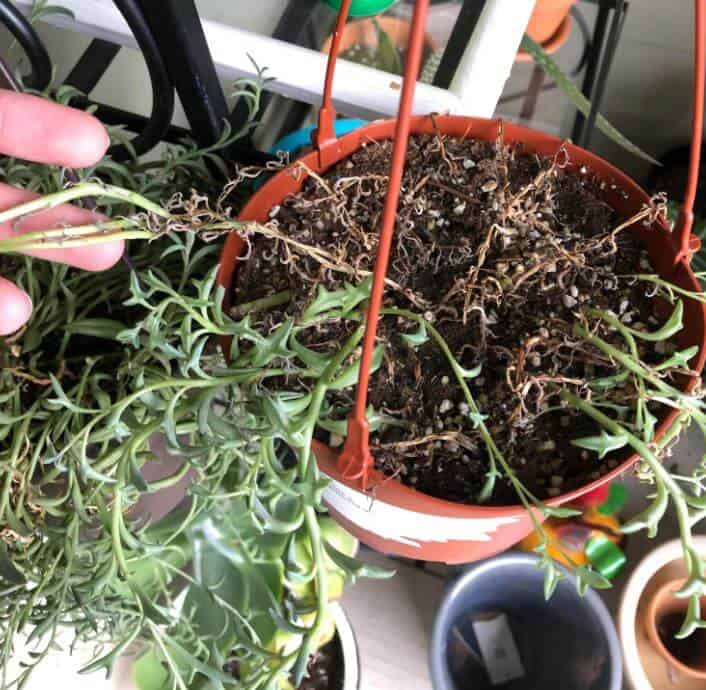
Underwatering this succulent is easy to diagnose. Should foliage begin to shrivel after your last watering, it’s a cry for more water. If you notice early on, know that slightly shriveled leaves are not permanently damaged and will regain their plumpness if a proper water schedule is followed. If foliage is extremely shriveled and dried out it may need to be trimmed off as it is improbable that it can be saved.
An Overwatered String of Dolphins
Excessive watering of this succulent can cause foliage to pale in color, and slowly appear yellowish and translucent. While initially this may not appear to be much of a problem, left unattended, leaves may begin to shrivel. Shriveling is not necessarily only indicative of a lack of water and at times can be confusing. Before rushing to water again, verify if the soil bed is already soggy. In the case of overwatering, the shriveling is caused by the suffocation or drowning of the root system. With too much water, roots do not receive the necessary aeration and oxygen and are unable to produce energy for the plant. Roots will gradually rot and die.
Generally, a succulent will manage with weekly watering after the soil bed top has dried.
A String of Dolphins drying up can be indicative of either underwatering or overwatering. What it indicates is that the root system is not able to pump water to the foliage. This can be due to a lack of water or a suffocating root system that no longer has the energy to pump water to leaves to maintain healthy hydration.
A String of Dolphins Dying
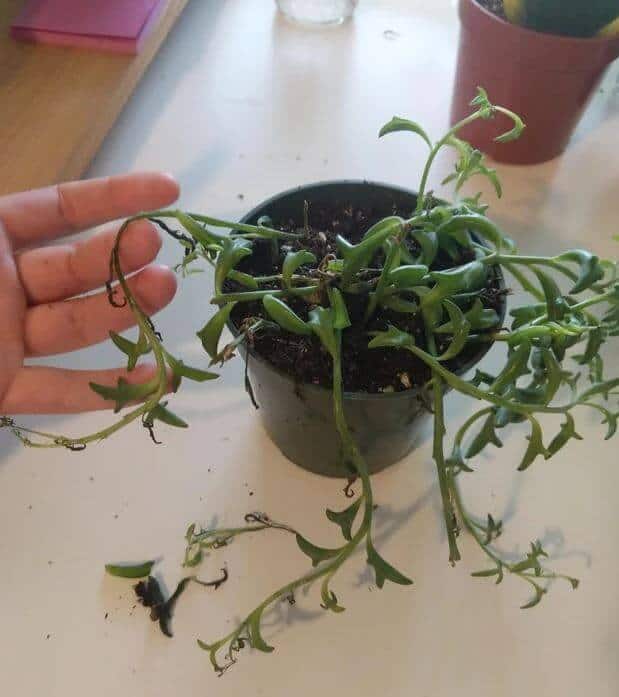
Several other possibilities can lead to your String of Dolphins dying and may take place even if your watering schedule is perfect. Poorly draining soil and a lack of sufficient lighting are two environmental conditions that can negatively influence the health of your plant.
Improper Soil Bed Drainage
Overwatering this succulent can lead to root rot and be fatal, but often the problem lies not lie in the watering schedule itself, but in compacted soil that does not drain well or sufficiently. If the soil is not aerated due to an excess of moisture, roots will begin to drown, rot, and die.
A String of Dolphins plant should be planted in a soil mix specially formulated for succulents or cacti. By touching the soil bed surface you’ll be able to verify if the soil seems soggy. The container’s weight will also be indicated as it will feel heavier with water retention.
The best thing to do if drainage is a problem is to repot your succulent in an appropriately blended soil mix for succulents and check that the container has a sufficient number of drainage holes.
A Lack of Sufficient Light
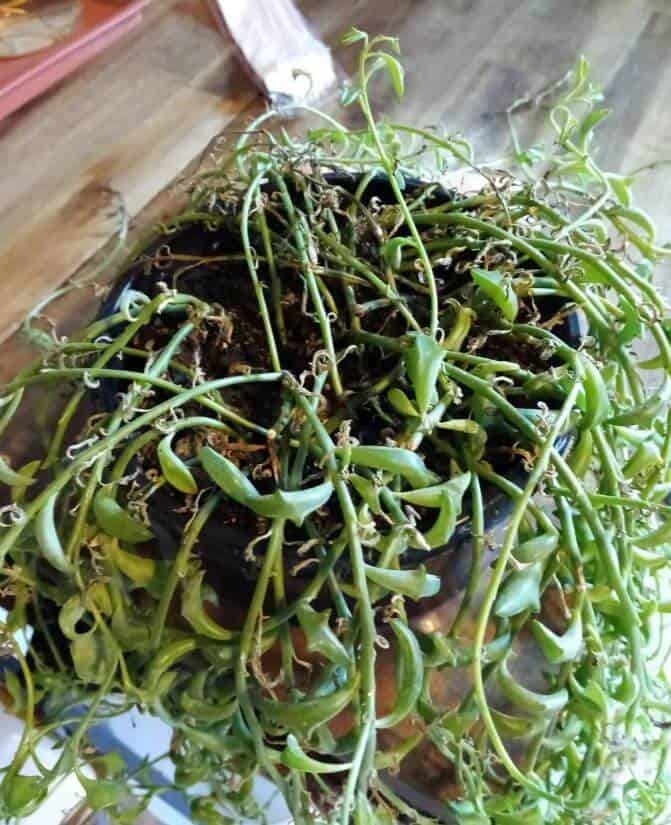
Succulents require bright if indirect light. Consider that the average living room lighting is about five times less than what a succulent needs to thrive. When a plant is deprived of light it will save energy by producing less, but this can imperil its survival. Vital functions begin to slow and the plant risks dehydration as it will not be able to pump enough to foliage. If you change the plant’s location to a spot with brighter light, it should revive quickly.
Can I Revive My String of Dolphins?
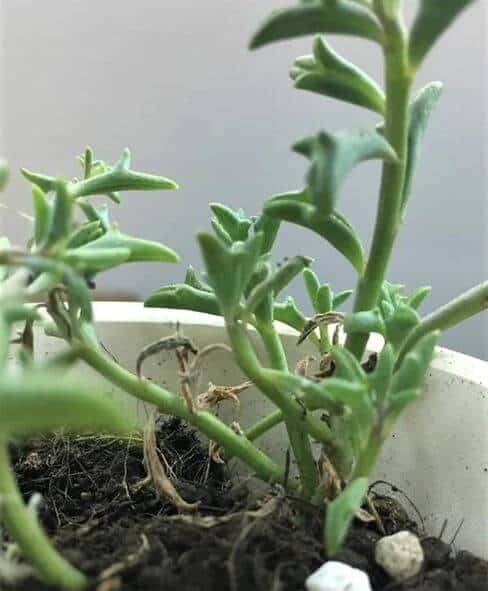
If caught early, most of the underlying causes of a dying String of Dolphins can be reversed. For excessive heat or lack of adequate light, just change your plant’s location.
A watering problem needs to be correctly identified. Underwatering is easily modified and can be facilitated by bottom watering or allowing our plant to sit in several inches of water until it has absorbed what it needs and draining any excess before returning it to its spot. Do not leave a succulent sitting in a dish of water.
In the case of overwatering, you need to verify if the roots have begun rotting. Repot your plant in appropriate fresh potting soil. If roots have been compromised, you will need to remove all rotting and diseased roots before repotting. If root damage is significant prune a third of the foliage to lessen stress on the root system. Save trimmed stems for propagation in water. If most of the root system has rotted, repot your plant in fresh soil and place it under a humidity terrarium dome until the roots show new growth. Avoid watering.
Although an uncommon succulent, in the proper environment a String of Dolphins demands very little of its owner and is a lovely addition to an indoor garden.

